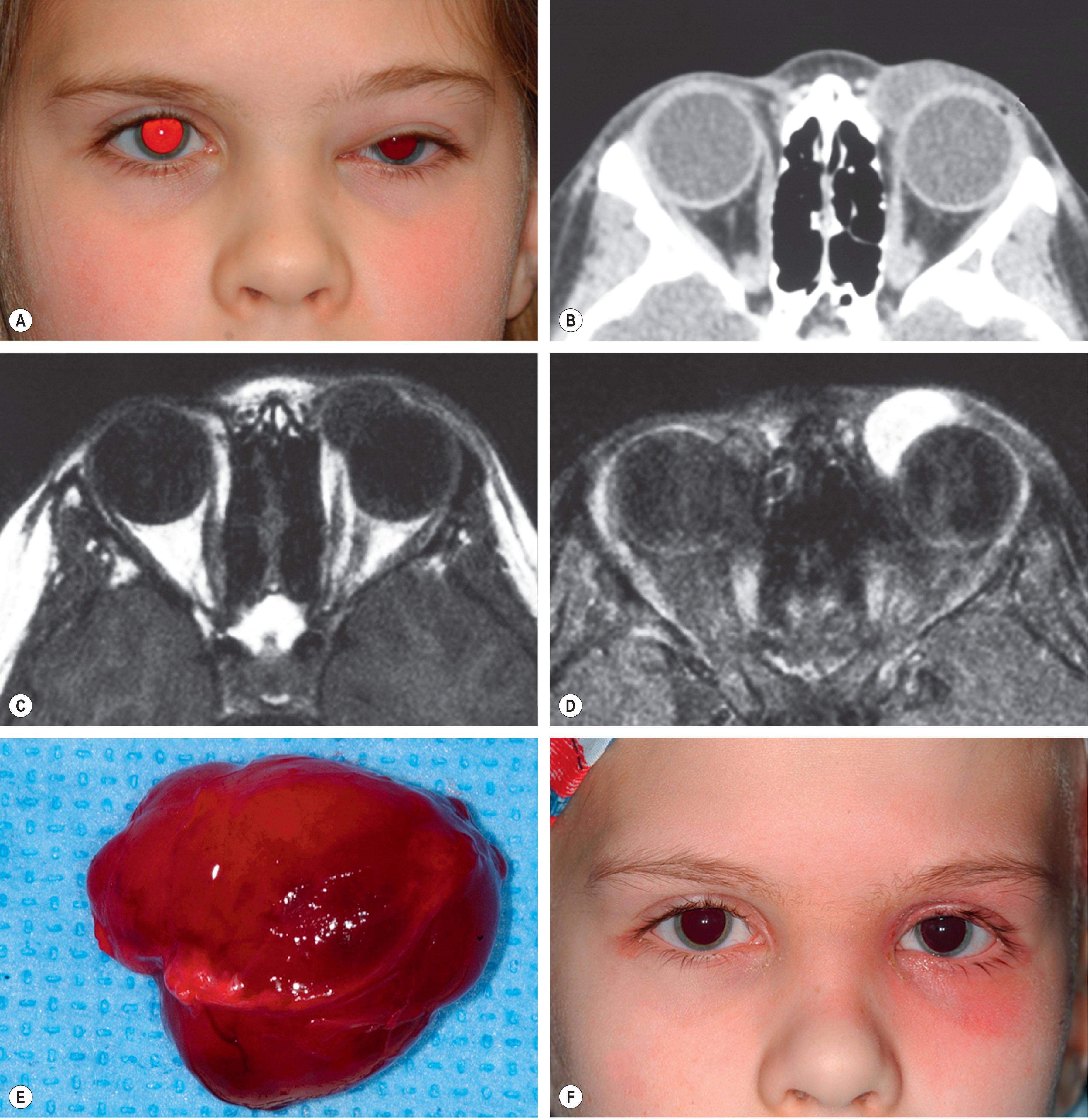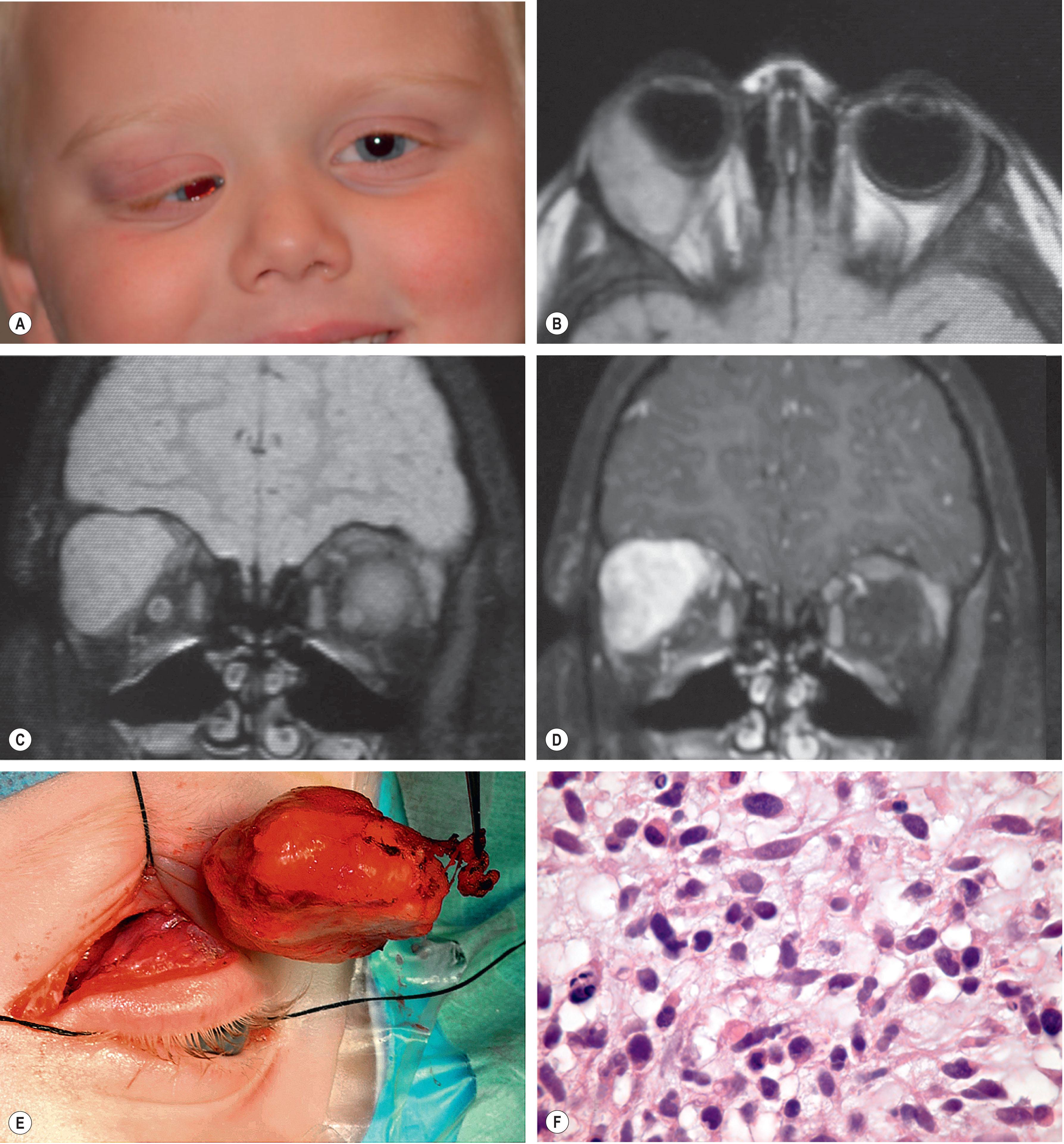Physical Address
304 North Cardinal St.
Dorchester Center, MA 02124
Rhabdomyosarcoma (RMS) is a highly malignant neoplasm that can develop in children or adults. This is the most common soft tissue sarcoma of the head and neck in children and represents 5% of childhood cancers. RMS can occur in any anatomic location of the body where there is skeletal muscle, as well as other sites without skeletal muscle, such as the soft tissues of the orbit. The primary sites of RMS include head and neck (including orbit; 40%), genitourinary tract (20%), extremities (20%), trunk (10%), and others (10%).
The ocular region, particularly the orbital soft tissues, represents an important anatomic location for RMS. This is the most common primary orbital malignancy of childhood. In rare instances, RMS has been known to arise in the eyelid, conjunctiva, and the intraocular structures. Furthermore, this malignancy can invade the orbit as a metastatic tumor from a distant location or secondarily extend in the orbit from an adjacent primary neoplasm in the paranasal sinuses. In a clinical series of 1264 patients with orbital tumors in children and adults, there were 35 cases (3%) of orbital RMS, but this accounted for 97% of myogenic tumors of the orbit.
Orbital RMS generally occurs in the first two decades of life with a mean age at diagnosis of 8 years; however, orbital RMS has been observed in adults and has occurred as a second cancer following treatment of primary retinoblastoma. Prompt diagnosis and treatment by the ophthalmologist can save the life of the affected patient. Therefore, eye care physicians should be aware of this tumor, recognize the clinical features, and refer the patient for immediate treatment.
The clinical features of orbital RMS include proptosis (80%), globe displacement (80%), blepharoptosis (55%), conjunctival swelling (60%), and eyelid edema (60%) ( Figs. 22.1–22.3 ). More advanced cases show downward and lateral displacement of the globe due to the typical superior or superonasal location of the mass. Ophthalmoscopy can occasionally reveal choroidal folds, retinal venous tortuosity, and optic disc edema. Pain is an uncommon symptom and usually occurs in more advanced cases. Visual impairment is usually minimal unless the tumor becomes advanced. In regions where medical care is not readily available, RMS can attain immense proportions and destroy the eye.


Any child in the first two decades of life who presents with symptoms and signs of an orbital mass should be evaluated for RMS. The child should have a detailed history, office examination, and imaging studies, particularly magnetic resonance imaging (MRI) or computed tomography (CT).
MRI is a valuable method for diagnosis of soft tissue tumors and surgical planning for treatment. With T1-weighted MRI imaging, the tumor appears as a round to ovoid mass that is most commonly located in the orbital soft tissue superonasally. RMS typically has a hypointense signal with respect to orbital fat, and is isointense with respect to extraocular muscles. RMS generally shows moderate to marked enhancement with gadolinium and is best delineated with fat suppression techniques. On T2-weighted image, RMS is hyperintense to extraocular muscles and orbital fat. This tumor is usually solid but rarely cavitary RMS can resemble a cystic lesion.
Computed tomography can be important in the assessment of children with suspected RMS, particularly for the detection of bony involvement by the tumor. With CT, the tumor appears in the early stages as a well-circumscribed, homogeneous, round to ovoid mass that is isodense to muscle. It is usually extraconal in location and most often found in the superonasal aspect of the orbit. It is usually confined to the orbital soft tissues and does not appear to arise from the extraocular muscles or bone, although it can often cause displacement of the rectus muscles. In general, the smaller tumors do not invade bone, but larger ones can occasionally erode bone and extend into the sinuses or nasopharynx. Orbital RMS shows moderate to marked enhancement with contrast agents.
Become a Clinical Tree membership for Full access and enjoy Unlimited articles
If you are a member. Log in here